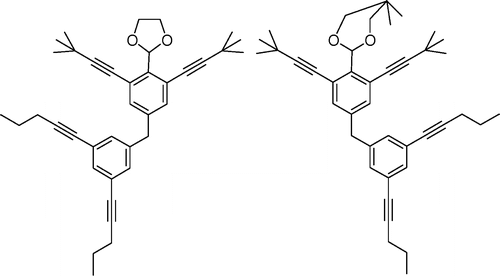In a project that combines art and science, a research group at Rice University in Houston have created a class of anthropomorphic molecules. At the school’s Department of Chemistry and Center for Nanoscale Science and Technology Stephanie Chanteau and James Tour have designed a full array of 2nm long chemicals that resemble the human form. They call the molecules NanoPutians. The array includes monomers, dimers and even longer polymer chains of these molecules. The two in the picture appear to be doing some sort of celebratory happy dance. The researchers originally came up with the idea in 2003. This is one of the cutest chemistry projects I’ve come across in quite a while. Kudos to the Rice university scientists for having a little fun with chemistry. Check out the link for the source article, which is behind an ACS paywall, and click here to see free pictures of more of these cute little molecules.
Month: March 2012 (page 1 of 8)
Check out this video from National Geographic on James Cameron’s deep sea adventures in the Mariana Trench. There is actual footage from under the sea mixed in with his commentary.
On his trips he goes about 7 miles below the sea surface and explores the depths of the Marian Trench – the lowest points on the Earth’s surface. So far he’s seen nothing but a lot of small shrimp-like creatures. It’s completely dark and the pressure is 16,000 pounds per square inch. For comparison the average atmospheric pressure at sea level is about 14.7 pounds per square inch. The area he wants to explore is more than 50 times larger than the Grand Canyon. I for one wasn’t surprised that there isn’t much to see down there, but maybe he’ll stumble across some signs of life on subsequent explorations.
Every medical press release promises to hold the key to the world’s greatest therapy and this one is no different. Scientists have found that a protein called S100PBP suppreses another protein, cathepsin Z, generating conditions that allow pancreatic cancer cells to spread into surrounding tissues. This will revolutionize therapeutics for pancreatic cancer, which is one of the hardest cancers to diagnose and treat. From Eureka Alert:
Researchers at Queen Mary, University of London have identified a new protein that makes pancreatic cancer cells less ‘sticky’ and therefore less able to attach to and invade other tissue.
The protein, known as S100PBP, does this by suppressing a second protein called cathepsin Z. The research team has shown that cathepsin Z makes pancreatic cancer cells sticky, allowing them to spread to their surrounding environment. Prior to this study nothing was known about the function of S100PBP in the body or the role that cathepsin Z plays in pancreactic cancer.
The findings, funded by the UK charity, Pancreatic Cancer Research Fund (PCRF), are reported today (26 March 2012) in TheAmerican Journal of Pathology.
Lead researcher Dr Tatjana Crnogorac-Jurcevic of Barts Cancer Institute at Queen Mary said: “We believe these findings are significant. A greater understanding of the role these proteins play in the adhesion and spread of pancreatic cancer to other organs, which is almost always the case in this deadly cancer, could help us to develop novel preventive and therapeutic targets.”
